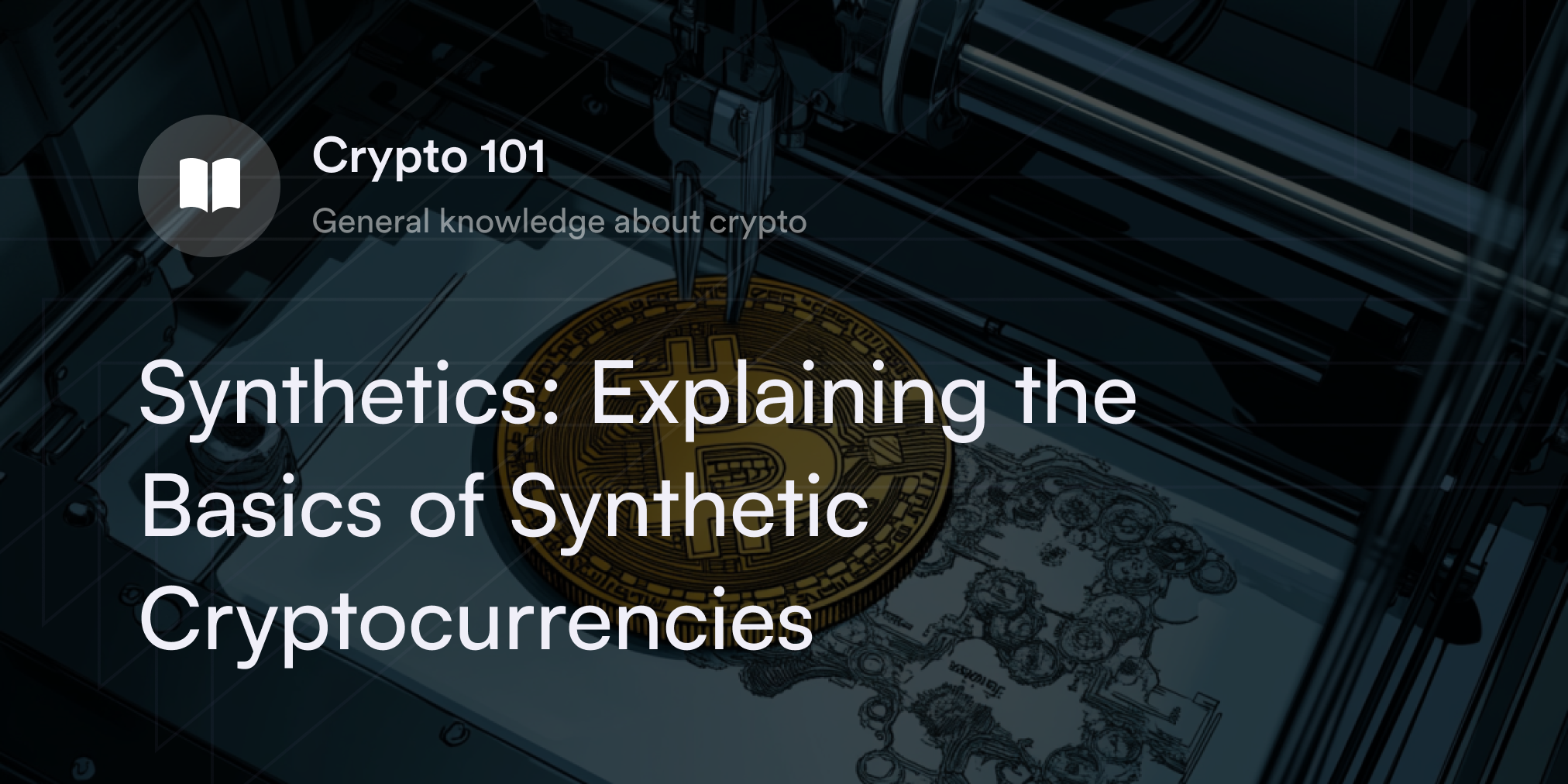


Cryptocurrency’s foundation depends on many factors, including decentralization and consensus mechanisms. And Bitcoin’s (BTC) launch proved it's possible to create a successful decentralized digital currency. The virtual currency is built on the proof-of-work (PoW) consensus mechanism (more on this in a bit).
But not all crypto developers agree that BTC's PoW is the best way forward. That’s because many people consider PoW an energy-intensive protocol. In fact, a few crypto enthusiasts even worked on ways to "improve" Bitcoin's protocol and create more scalable and sustainable cryptocurrencies in 2012, introducing the proof-of-stake (PoS) consensus algorithm.
Today, dozens of alternatives to build crypto assets exist, such as PoS, proof-of-capacity (PoC), and proof-of-activity (PoA). But PoS has become the most popular protocol besides Bitcoin's PoW.
And as PoS coins like Ethereum, Solana, and Cardano become market leaders, more people are curious whether crypto staking will overtake Bitcoin's PoW protocol.
So what is proof-of-stake in crypto, how does it work, and why are so many new crypto projects adopting it?
What is Proof-of-Stake in Crypto?
The proof-of-stake system verifies cryptocurrency transactions on decentralized computer networks called blockchains. Developers Sunny King and Scott Nadal introduced PoS in 2012 and launched the first PoS cryptocurrency Peercoin (PPC) the same year. PoS is called a consensus mechanism, meaning it helps computers (aka nodes) on a blockchain broadcast and verify a network’s status.
Also, no centralized companies or governments control blockchain operations, so crypto projects need a set of protocol rules and algorithms to ensure every node posts valid information on the public payment ledger. In the PoS system, each node locks cryptocurrency on the blockchain to participate in the validation process. Node operators receive crypto rewards whenever a PoS blockchain's algorithm chooses them to confirm a new batch (or block) of transactions.
How does Proof-of-Stake Work in Cryptocurrency?
Each PoS cryptocurrency has a unique validation and governance system, but all these networks make node operators put the native digital currency "at stake" on the blockchain. For example, nodes on the Ethereum blockchain deposit Ethereum's Ether coin (ETH), while those on the Solana blockchain use Solana's SOL coin.
Often, PoS networks use smart contracts to store each node's cryptocurrency, which are decentralized programs on blockchains that execute commands according to their pre-coded instructions. For instance, when a node deposits ETH into Ethereum's smart contract staking address, the contract instantly recognizes this action and sends the crypto rewards to the associated wallet address. Developers use smart contracts to maintain complete decentralization on their blockchains.
Once a node successfully sends the blockchain's native cryptocurrency to a staking address, they're eligible for cryptocurrency incentives whenever the algorithm chooses them to validate a block. Typically, the more crypto a node stakes, the better odds they'll post more transactions and receive more crypto compensation. However, PoS blockchains don't just use the "carrot" of crypto payments to secure their blockchains. Many protocols use "slashing" penalties to discourage nodes from posting malicious or inaccurate data. If enough computers on a PoS blockchain suspect a node is sending false data, the guilty node might lose all their staked cryptocurrency (or get their stake "slashed").
Often, there are two participants on PoS blockchains: validator nodes and delegators. Validators need to run the blockchain's software 24/7 and have higher minimum crypto requirements, but they receive a greater percentage of the total crypto rewards. In contrast, delegators send their crypto to a validator's account (aka pool) to earn some of the staking incentives. Delegators are held to different high standards than validator nodes and usually don't enjoy voting privileges on their chosen blockchain. Instead, validator nodes on PoS blockchains can use their coins or tokens as "votes" for on-chain proposals, casting their ballots on every delegator's behalf.
Pros and Cons of Proof-of-Stake
PoS offers many attractive features for developers and node operators, but there are still questions about its long-term viability. Programmers still debate whether the pros of PoS outweigh its potential risks.
Advantages
Eco-friendly: There's a reason environmental organizations like Greenpeace are more in favor of PoS blockchains than PoW blockchains. PoS cryptocurrencies don't use computational power to verify transactions. Instead, they’re usually carbon-neutral or negative and often on many "greenest" digital asset lists.
Scalability and speed: Another benefit of using a software program rather than computational power is it makes PoS blockchains more flexible and scalable. Typically, PoS blockchains don't have the same hardware constraints as PoW networks, which means they often have cheaper fees and faster transaction throughput.
Decentralized governance: PoS cryptocurrencies usually have on-chain governance structures known as "decentralized autonomous organizations" (DAOs) to give every node on the chain a say in future upgrades. These voting procedures help make the development process more transparent and democratic.
Disadvantages
Potential for large crypto holders to manipulate PoS chains: If institutions, individual traders, or staking pools control a large percentage of a PoS blockchain's coins, they may threaten the blockchain’s decentralization. Since many PoS DAOs use a "one coin equals one vote" model, large stakers can control 51% of the network and sway the chain’s direction, especially on smaller crypto projects.
Heavy reliance on smart contract code: Traders who stake on PoS blockchains need to rely on the programmers’ skills who wrote the project code. If glitches or vulnerabilities exist in the smart contract's design, stakers lose all the cryptocurrency.
Not as battle-tested as PoW: PoS has a shorter track record than Bitcoin's PoW. It may take years for developers to recognize unforeseen issues with the PoS protocol.
What are the Most Popular Proof-of-Stake Coins?
There are a few PoS projects that have a dominant position in the crypto market. You can always find the current top-performing PoS coins on crypto price aggregator websites, such as CoinGecko and CoinMarketCap. Both websites arrange cryptocurrencies in terms of their percentage of the total crypto market cap, so PoS coins higher on the list have a more significant share of the money in the crypto ecosystem.
Ethereum (ETH): At first, Ethereum used a PoW mining model based on Bitcoin's protocol, but the development team transitioned to PoS during The Merge. Founded in 2015, the Ethereum blockchain was the first to introduce smart contract capabilities, which influenced many novel blockchain innovations such as decentralized applications (dApps), decentralized finance (DeFi), and non-fungible tokens (NFTs). Despite the rise of competing smart contract chains, Ethereum has maintained its position as the second-largest cryptocurrency after Bitcoin.
Cardano (ADA): Created by former Ethereum developer Charles Hoskinson, Cardano is a smart contract PoS blockchain similar to Ethereum. Cardano is well-known in the crypto community for its commitment to high-quality peer-reviewed research and prominent partnerships with academic institutions, such as the University of Edinburgh.
Solana (SOL): Solana is one of the fastest smart contract blockchains with max transaction speeds of 50,000 per second. The blazing fast speeds and low fees on Solana's PoS blockchain attracted a frenzy of trading activity after its launch in 2020, especially in the NFT trading sector.
Cosmos (ATOM): The Cosmos Network aims to use its dual-blockchain PoS infrastructure to make it easy to transfer coins and tokens across multiple blockchains. Sometimes called the "Internet of Blockchains," Cosmos helps developers build sovereign blockchains and connect to other dApps and Web3 networks.
What is Proof-of-Work Versus Proof-of-Stake?
Primarily, PoS relies on staking, while PoW depends on mining. Unlike PoS, the PoW system doesn't require nodes to put down crypto collateral to contribute to the blockchain's validation process. Instead, PoW blockchains like Bitcoin make node operators (aka miners) solve challenging algorithmic puzzles every few minutes to get the chance to post a new block of data. All the nodes on PoW blockchains want to be the first to solve this "mini-game" to claim free cryptocurrency and network fees. Since the equations on PoW are so difficult, they serve as "proof" that each node used a significant amount of computational power (i.e., "work") when processing transactions, ensuring the network’s integrity. Although the PoW system is secure, it encourages nodes to use high energy to compete for crypto rewards. For this reason, PoW mining usually causes more pollution than PoS blockchains. For example, Ethereum's switch from PoW to PoS in the 2022 "Merge" reduced its carbon footprint by 11 million tons to 870 tons of CO2 annually.
Find More ‘Staking Study Guides’ on dYdX Academy
If you want more details on how cryptocurrency staking works, check out the Web3 guides on our Academy. From deep dives on PoS cryptocurrencies like Solana and Cardano to guides on major events like Ethereum's PoS Merge, you’ll find plenty of resources to learn about this influential Web3 technology. And check out dYdX's blog to get the latest about the dYdX protocol.
Also, remember, dYdX offers eligible traders low-fee decentralized trading for dozens of crypto perpetuals, including PoS coins like Ethereum, Cardano, and Solana.
Start trading on dYdX today!
Disclaimer
The content of this article (the “Article”) is provided for general informational purposes only. Reference to any specific strategy, technique, product, service, or entity does not constitute an endorsement or recommendation by dYdX Trading Inc., or any affiliate, agent, or representative thereof (“dYdX”). Use of strategies, techniques, products or services referenced in this Article may involve material risks, including the risk of financial losses arising from the volatility, operational loss, or nonconsensual liquidation of digital assets. The content of this Article does not constitute, and should not be considered, construed, or relied upon as, financial advice, legal advice, tax advice, investment advice, or advice of any other nature; and the content of this Article is not an offer, solicitation or call to action to make any investment, or purchase any crypto asset, of any kind. dYdX makes no representation, assurance or guarantee as to the accuracy, completeness, timeliness, suitability, or validity of any information in this Article or any third-party website that may be linked to it. You are solely responsible for conducting independent research, performing due diligence, and/or seeking advice from a professional advisor prior to taking any financial, tax, legal, or investment action.
You may only use the dYdX Services in compliance with the dYdX Terms of Use available here, including the geographic restrictions therein.
Any applicable sponsorship in connection with this Article will be disclosed, and any reference to a sponsor in this Article is for disclosure purposes, or informational in nature, and in any event is not a call to action to make an investment, acquire a service or product, or purchase crypto assets. This Article does not offer the purchase or sale of any financial instruments or related services.
By accessing this Article and taking any action in connection with the information contained in this Article, you agree that dYdX is not responsible, directly or indirectly, for any errors, omissions, or delays related to this Article, or any damage, injury, or loss incurred in connection with use of or reliance on the content of this Article, including any specific strategy, technique, product, service, or entity that may be referenced in the Article.







